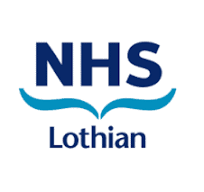Patient resources
NHS Lothian MSK Self Help Resources Webpage
Definition
Pain arising from structures within the subacromial space including the rotator cuff tendons and surrounding tissues. Previously referred to as shoulder impingement, tendinitis and bursitis however these terms are no longer recommended.
Typical signs and symptoms
- Pain is typically felt at the anterolateral shoulder, worse with lifting the arm, and on overhead activities
- There may be night pain but can usually find positions of comfort
- Commonly a history of change in loading activities at onset e.g. repetitive movements, heavy lifting, etc
- Examination findings may include: pain on active shoulder movements, a painful arc, passive movements should be well preserved, pain on resisted tests
Prevalence and risk factors
- Most common cause of shoulder pain presenting in primary care; up to 70% of all shoulder pain problems
- Common age 35 – 75 years
- Risk factors include: a change in load through the shoulder, certain medical conditions and metabolic factors (e.g. high cholesterol, inflammatory conditions, diabetes, obesity), lack of quality sleep, stress, long term and excessive alcohol intake, smoking, genetics
Prognosis/ risk factors for poor outcome
- Most patients improve with non-operative management
- Can improve within weeks to months, depending on contributing factors
- Symptoms can persist for several years
- Risk factors for poor outcome may include:
- higher pain severity and disability at baseline
- longer pain duration
- multi-site pain
- previous pain episodes
- anxiety and/or depression, stress
- adverse coping strategies
- poor self-efficacy
- low social support, unemployment
- low expectations of recovery
- lack of quality sleep
- lifestyle – e.g., smoking, alcohol, physical activity levels; medical co-morbidities including diabetes, inflammatory conditions, high cholesterol
Other considerations
It is key to distinguish a traumatic rotator cuff tear in the younger patient (typically <65) as this is a red flag and requires urgent referral to Orthopaedics. Atraumatic degenerative rotator cuff tears can occur in older patients. In these cases, patients usually experience pain and weakness in the absence of significant trauma.
Differential diagnoses
- frozen shoulder
- calcific tendinopathy
- acromioclavicular joint disorders
- shoulder instability
- glenohumeral joint osteoarthritis
Relevant standards and guidelines
NICE Clinical Knowledge Summaries: Shoulder Pain
BESS: Patient Care Pathways: Subacromial Shoulder Pain

